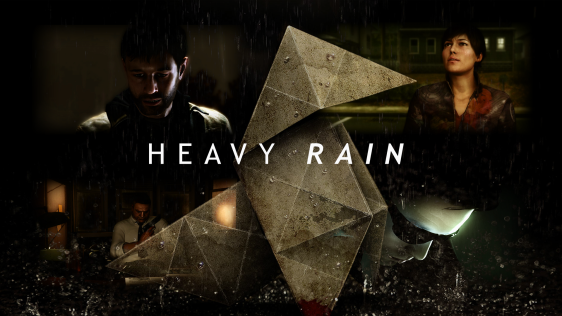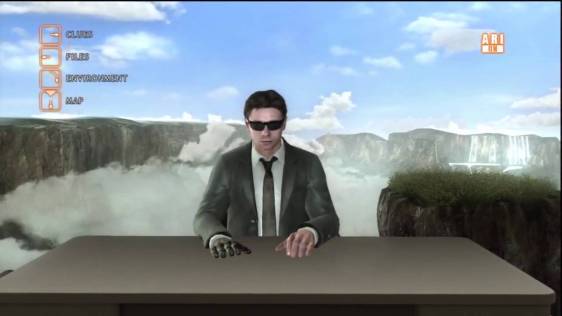David Cage’s Heavy Rain presents itself as an “Interactive Drama”, and mostly succeeds in being just that. It tells a compelling murder mystery thriller, the choices the player makes impact the outcome of events, and the story is told through the viewpoints of well written characters with voice actors who make them come alive. But the game’s dramatic structure and environmental design is not on par with its story, and I’m going to try to analyse these weaknesses.
First of all, I won’t spoil any of the endings, but I will speak in detail about the Prologue and the dramatic turn of events in Chapter 1. Also, I’m not here to criticize the game and condemn it just for the sake of it. Heavy Rain is excellent in many ways, but because of this, its shortcomings are more surprising. They need to be analysed for us to understand why they happened and what a narrative designer can learn from these mistakes.
- The Problems with the Prologue
Heavy Rain features a rather long and uncomfortable prologue that has almost nothing in common with the rest of the game, neither in its tone, nor in its themes. The player takes control of one of the main characters, Ethan. He’s in his own house, sleeping. The goal here is to wake up, take a shower, interact with objects in the house, wait for his family, set the table for dinner, play with the kids, and that’s about it.
Later, in Chapter 1, tragedy strikes in a different location (the Mall), after a whole different set of interactions. So what were the intentions of the Prologue? We can assume the following:
- Establish one of the main characters (we learn that he’s an architect, has a happy family, maybe a somewhat distant wife)
- Tutorialize the controls and gameplay concepts, get the player accustomed to the cinematic style
It does alright, but I can’t help but realize that it fails to:
- Set the tone for the rest of the game (although one might argue that the contrast itself has dramatic merits, but even in that case it’s far too drawn out)
- Make references or sneak in decent foreshadowing for the actual plot
- Hint at the complexity, scope or goal of the story
- Give the player an actual problem to solve that is related to the plot
- Make its environment tell stories (we learn about Ethan, but not much of his family)
Most of these things come in Chapter 1 and beyond, almost half an hour late (or maybe an hour, if you’re thorough). And while I can get the arguments for delaying these narrative hooks, with a small creative effort, they could’ve make it work even better.
Compare Heavy Rain to its spiritual predecessor Fahrenheit (Indigo Prophecy). That game starts off with a sense of urgency, a mystery, but it teaches the players the basics of the game and tells something of its character.
Heavy Rain could’ve started with the Mall scene – its perfectly capable of tutorializing the controls and establishing the characters and their idyllic relationship. The Mall is a perfect place to hint at the Origami Killer (headlines on a newspaper, a TV in an electronics shop is tuned to the news, etc.), and it’s more than a perfect place to hint at marital problems – the tragedy doesn’t quite explain the divorce in the next chapter. In the Mall, Ethan could’ve express his interest in architecture, and other characters could’ve say essentially anything really to flesh out their characters and make them relatable. This doesn’t even happen in the Prologue. (And ultimately, Jason wasn’t relatable enough that his fate would affect me in any way.)
The Prologue is essentially a very empty segment, a waste of time. It hurts the dramatic structure and the overall experience.
2. The Problems with Environmental Storytelling
The main mechanic of Heavy Rain is inspecting objects and commenting on them. Yet I see a potential lost here: most of the interactions don’t have any real meaning. In an adventure game, it’s good to have some sort of MacGuffins, useless items, but they should build the world, give hints, not on a gameplay level (since they’re useless), but on a higher narrative level in which the player (not the played character) can draw conclusions. To be fair, Heavy Rain does this right a few times, but in most of the time, the interactive objects don’t make the game richer, they just delay progress and extend gameplay time in a rather shallow fashion.
Also: solving the mystery is not directly tied to the player’s observations and the amount of clues found. The player makes choices, and through those choices the characters may or may not learn something new, but the player can’t directly gather more clues, organize them or draw conclusions – except for the FBI Investigator, whose segments are vastly superior to the others – not because of the fancy abilities of his gadget, but because of the player’s involvement in solving the mystery.
Player interaction is affecting the fate of the characters, but rarely the unfolding of the greater story. Player interaction can’t be used to understand the story better, to make sense of all the events earlier, without the characters making the revelations. The player’s knowledge is limited to the characters’ knowledge, which makes sense in a movie, but in an interactive world… it’s kind of a bummer.
As to why this second problem bothers me more than in, say, The Walking Dead, it’s simple: Heavy Rain has way too many mysteries going on really early, and it forces (or at least encourages) the player to think and try to make sense of the events. The dissonance comes from the fact that the player isn’t given any tools or clues to do so. The Walking Dead presents problems to solve, Heavy Rain presents a mystery to solve, yet they are both using the same gameplay mechanics. In Heavy Rain, it’s barely enough.
Not a big problem, but still something to think about.
Again, please note that “bad narrative design” in the title of the blog post isn’t referring to Heavy Rain (as a whole). It’s not a prime example of bad narrative design. But it has problems that highlight some of the worst offences in narrative design, and here, they almost ruined the otherwise great experience for me.
Ultimately, Heavy Rain has some progressive ideas, but its clumsier in its narrative design than I have expected, which came as a surprise as it is often hailed as the greatest achievement in interactive dramas. Other games with more interesting gameplay can get away with bad story pacing, but when drama IS the game itself, these mistakes can be fatal, and lead to players quit early, before experiencing “the good parts”.
Besides, the first five minutes should always be one of the good parts. Getting up from the bed, showering and setting a table is just a lazy beginning for a story, in any kind of medium.





